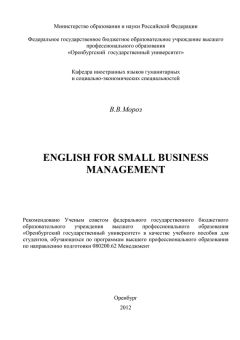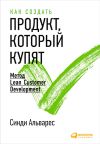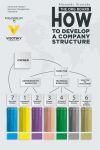Текст книги "English for Small Business Management"

Автор книги: Виктория Мороз
Жанр: Малый бизнес, Бизнес-Книги
сообщить о неприемлемом содержимом
Текущая страница: 2 (всего у книги 7 страниц) [доступный отрывок для чтения: 2 страниц]
5. Something very interesting happened to me last week.
6. We’re spending more than one million dollars on advertising this year.
7. The Accounts Department may not authorise this payment.
8. I worked as a consultant for four years after my MBA.
1.4.12 Exercise 12.
A marketing manager is writing a training manual that explains how the company uses questionnaires to do market research. Complete the text by putting the verbs from the list below into the present simple passive.

First, we carefully select a sample people to ask. Then the questions ______ by a small team within the department. Next, the questions ______ into sequence and grouped together by topic. After that, we print questionnaire and it _______ to everyone in the sample. Of course, not all the forms __________ to us, but we try to collect as many as possible.
Sometimes, a small gift ________ to people who return the forms, as an incentive. Finally we enter all the results onto a spreadsheet, and the information ______ by the marketing department. If we are using a very large sample the distribution and collection _________ to an external company.
1.4.13 Exercise 13.
Complete the second sentence so it has a similar meaning to the first sentence.
1. David Gill from Marketing lent me this book.
I _________ this book by David Gill from Marketing.
2. This sample was given to me at the Trade Fair.
_______________________ the sample at the Trade Fair.
3. They promised us delivery within two weeks of our order.
We ____________ within two weeks of our order.
4. A textile firm near Milan made this fabric for us.
_______________ for us by a textile firm near Milan.
5. This order was sent to us through our website.
_____________ this order through our website.
6. My secretary booked the flight for me.
___________ for me by my secretary.
1.4.14 Exercise 14.
Complete the report by putting the verbs into the present perfect active or passive.
1. Brasil ________ (transform) from an economy based on sugar and coffee into a leading industrial power, and this ______ (happen) over a relatively short time period.
2. Over recent years inflation ________ (bring) under control, and foreign direct investment __________ (encourage).
3. The Government ____________ (privatise) many state-owned companies, and they ____________ (also/invest) a lot of money in advanced infrastructure.
4. In an attempt to decentralize the economy, Campinas was chosen to be Brazil’s IT capital, and car production ______________ (move) away from traditional centres to states such as Rio Grande do Sol in the south.
5. No one pretends that all the old problems _________ (solve), but Brazil is finally taking its place on the world stage.
1.4.15 Exercise 15.
Discuss the factors that make the family business unique
– Family members have a special involvement in a family business.
– Business interests (production and profitability) overlap family interests (care and nurturing) in a family business.
– The advantages of a family business include a strong commitment of family members and focus on people, quality, and long-term goals.
1.4.16 Exercise 16. Explain the cultural context of the family business
– Special patterns of belief and behavior constitute the family business culture.
– The founder often leaves a deep imprint on the culture of a family firm.
1.4.17 Exercise 17.
Outline the complex roles and relationships involved in a family business
– A primary relationship is that between founder and son or daughter.
– Some couples in business together find their relationship with each other strengthened, while others find it weakened.
– Sons, daughters, in-laws, and other relatives may experience collaboration or conflict with other relatives.
1.4.18 Exercise 18.
Identify management practices that enable a family business to function effectively
– Good management practices are very important in a family business.
– Family members should be treated fairly and consistently in accordance with their ability and performance.
– Motivation of nonfamily employees can be enhanced by open communication and fairness.
– Family retreats bring all family members together to discuss business and family matters.
– Family councils provide a formal framework for the family's ongoing discussion of family and business issues.
1.5 Experiential exercises
1 Interview a student who has grown up in a family business about the way he or she may have been trained or educated, both formally and informally, for entry into the business. Prepare a brief report, relating your findings.
2 Interview another student who has grown up in a family business about parental attitudes toward his or her possible entry into the business. Submit a one-page report describing the extent of pressure on the student to enter the family business and the direct or indirect ways in which expectations have been communicated.
3 Identify a family business and prepare a brief report on its history, including its founding, family involvement, and any leadership changes that have occurred.
4 Read and report on a biography or history book pertaining to a family in business or a family business.
1.6 Exploring the Web
With the keyboard search capability of the Internet, browse information appearing under the caption «family business.» Prepare a one-page report identifying the kinds of data available, and include references to at least two academic programs having home pages on the Web.
2 Unit 2. Customer Satisfaction – the Key Ingredient
2.1 Classwork

2.1.1 Exercise 1. Remember terms that you’ll come across in the text
competitive edge – конкурентное преимущество;
competitive advantage – конкурентное преимущество;
notch – незначительное изменение курса валют или цены;
customer – покупатель, заказчик, клиент;
consumer – потребитель;
dealer – торговец, дилер, торговый агент;
chief executive – руководитель высокого ранга;
competitor – конкурент;
checkbook – чековая книжка;
overdraft – кредит по текущему счету;
charge – цена, плата; расходы, издержки;
to refund – возвращать, возмещать (деньги, убытки)
Vocabulary Notes:
to split – делить, дробить, разбивать на части;
top-notch – (разг.) превосходный, первоклассный;
survey – обзор;
to reveal – открывать, показывать, обнаруживать;
to summarize – подводить итог;
to dismiss – отделываться от ч. – л.;
complaint – жалоба;
to vest authority – облекать полномочиями, властью;
at the expense of – за ч. – л. счет;
to prosper – процветать;
to implement – обеспечивать выполнение, осуществлять;
disgruntled – в плохом настроении, рассерженный, раздраженный;
to drop off – довести до, подбросить на машине.
2.1.2 Exercise 2. Read the text

customer satisfaction strategy – a marketing plan that emphasizes customer service
Customer service can provide a competitive edge for small firms regardless of the nature of the business. A customer satisfaction strategy is a marketing plan that has customer satisfaction as its goal. Such a strategy applies to consumer products and services as well as industrial products. Customer service should be the rule rather than the exception. The use of outstanding customer service to earn a competitive advantage is certainly not new. Longtime retailer Stanley Marcus, of Dallas-based Neiman-Marcus, is famous for his commitment to customer service. What is relatively new to small firms is the recognition that top-notch customer service is smart business.
A recent survey by Communication Briefings revealed that, in general, customers do not feel they get what they deserve. Responses to the question «How would you rate the quality of customer service you receive from most organizations you do business with?» are summarized as follows:
Excellent: 6 percent
Good: 45 percent
Fair: 43 percent
Poor: 5 percent

Here are some other findings of the study:
1 Over one-third of the respondents said the biggest customer service mistake was failing to make customers feel important.
2 Almost one-fourth of the respondents indicated that clerks are rude to the customers and management dismisses customer complaints.
3 Nearly one-half of the respondents said that in the past year they had ceased doing business with three or more businesses because of poor customer service.
What is the special significance of these statistics for small businesses? The answer is that small firms are potentially in a much better position to achieve customer satisfaction than are big businesses. Why? Ask yourself if the problems identified by the survey are more solvable within firms having fewer employees. For example, with fewer employees, a small firm can vest authority for dealing with complaints in each employee. On the other hand, a large business will usually charge a single individual or department with that responsibility.
Consider the following two firms' success with customer service tactics. Sewell Village Cadillac, a car dealer in Dallas, Texas, is famous for its customer service. Its owner, Carl Sewell, began the service journey in 1967 when Sewell Village was in third place among the three Dallas Cadillac dealers. Sewell "realized that most people didn't like doing business with car dealers. They looked forward to seeing us about as much as they did going to the dentist," he says. Therefore, he simply began asking customers what they didn't like about car dealers. Three points of major dissatisfaction were identified – service hours, being without a car during service, and repair done incorrectly. By responding to these concerns, Sewell Village Cadillac increased its customer satisfaction rating.
Another firm reaping the benefits of providing superior customer satisfaction is the Phelps Country Bank, headquartered in Rolla, Missouri. This little bank has prospered at the expense of its big competitors because of its chief executive Emma Lou Brent, who has developed a different kind of banking environment. The following are among the customer service strategies implemented by the bank's 55 employees:
– The lobby opens five minutes before 9:00 A.M. and closes five minutes after 3:00 P.M.—there are no disgruntled customers peering in and looking angrily at their watches.
– [A customer] is upset because he lost track of his checkbook balance and now doesn't want to pay the overdraft charge? A rep.. might refund the amount if she thinks it was an honest mistake. Or she might propose splitting it with him.
– Employees do not keep customers waiting while they finish paperwork.
– The bank's newspaper ads carry lending officers' home phone numbers, as do the officers ' business cards. Customers are encouraged to call nights or weekends on urgent matters. High levels of customer service do not come cheaply. There are definite costs associated with offering superior service before, during, and after a sale. However, many customers are willing to pay for good service. These costs can be reflected in a product's or service's price, or they can sometimes be scheduled separately, based on the amount of service requested. For example, David and Linda West, owners of San Luis Sourdough Co. in San Luis Obispo, California, price according to how much service their clients (supermarkets and specialty food stores) require. «If a supermarket is happy to have the bread dropped off at the back door, the wholesale price is $0.97. If the store wants to be able to return day-old bread for full credit, the cost is $1.02 a loaf.» The Wests figure the price covers the cost of the service.
Because there is a great deal of current interest in applying the principles of total quality management to controlling customer service and creating a competitive advantage, we will briefly examine this topic in the next section.
2.1.3 Exercise 3. Remember how to say and write numbers in English. Pay attention to the difference in the use of numbers in British and American English. In using decimals, to say “nought point five” for 0.5 is a more precise usage than “point five”. In mathematics, science and technical contexts: BrE: Say nought or zero; AmE: Say zero

2.1.4 Exercise 4. Complete the following chart:

2.2 Home Assignment
Vocabulary Notes:
to encompass – заключать (в себе);
to tabulate – сводить в таблицы;
undercover – тайный, секретный;
to implement – осуществлять, выполнять.
2.2.1 Exercise 1. Read the text
Total quality management – (TQM) an all-encompassing management approach to providing high-quality products
Customer Service and Total Quality Management
Total quality management (TQM) is an umbrella term encompassing intensive quality control programs that have become popular in U.S. businesses in the past several years. TQM is rooted in the superior quality of Japanese products in the 1970s. Large U.S. manufacturers responded to the Japanese challenge with similar quality control programs.
Increasingly, small manufacturing firms are feeling the need to implement TQM, partly as a result of pressure from the big companies they supply. Other small firms are interested in TQM because they recognize the potential for creating a better competitive advantage. TQM principles, therefore, extend beyond manufacturing to firms offering final consumer products and services. We will briefly examine the elements of a TQM program as they relate to offering final consumer products and services.
Quality improvement starts with the culture of the organization. Consider the remarks of Jim Zawacki, owner and president of Grand Rapids Spring & Wire Products in Grand Rapids, Michigan – a small firm with 160 employees. Zawacki believes that "getting people to understand why we're in business" and building "trust, relationships, integrity, and communication" are the keys to developing the appropriate organizational culture for TQM. His firm is seeing results.
Entrepreneurs should place top priority on creating and controlling quality customer service. One recent study indicates that small firms are keenly aware of the importance of customer service when they compete with big business. Approximately 70 percent of the small firms surveyed mentioned "customer service" as a successful competitive tactic. Also note that "quality of employees" was mentioned quite frequently. Obviously, employees are critical ingredients in a quality customer service program.
Making customer satisfaction the number one priority is not necessarily as natural as it might seem. Business has used the phrase "The customer is always right" for decades, but have U.S. businesses achieved a high level of customer satisfaction? Here are some results of a survey for which one-half of the respondents were companies with 500 or fewer employees:
1 Оnly 57 percent of the businesses rate "meeting customer needs" as their number one priority.
2 In 62 percent of the companies, not everyone is aware of what customers do with the company's product or service.
3 Fewer than half of new products and services are developed or improved based on customer suggestions and complaints, despite an MIT study showing that the best innovations come from customers.
4 Only 59 percent of the firms contact lost customers; 7 percent do nothing when they lose a customer.
5 In some companies (17 percent), not even salespeople talk to customers. It gets worse for senior management (22 percent don't talk to them), marketing (29 percent), and R&D (67 percent).
6 Only 60 percent report that they base their competitive strategy primarily on "attention to customer needs." (And they say that only 29 percent of their competitors emphasize this.)
7 Thirty-three percent say that their marketing strategy aims to produce business from new, as opposed to repeat, customers.
It seems fair to say that there is room to improve customer satisfaction.
2.2.2 Exercise 2. Read the text
Total Quality Management
Tom Dryden, of Dryden Vacuum Cleaners, believes in quality: “The specifications or specs of a product are exact instructions about its design, including its dimensions (size), how it is to be made, the materials to be used, etc. The objective of quality control is conformity to specifications, the idea that the product should be made exactly as it was intended, with zero effects: no faults at all. Things should be done right first time so we don’t have to correct mistakes later in a process of reworking. We do spot checks every few minutes during production to ensure everything is going well.
We have a system of total quality management (TQM), including quality circles: groups of employees who meet regularly to suggest improvements.”

Across:
3 See 6 down.
4, 5 down Right … ..... (5,4).
8 Could be length, height or width. (9).
11 Total quality ...... (10).
12, 10 Making sure things are alright. (4, 6).
Down :
1 What the designer decides. (13).
2 Doing it again when you shouldn’t have to. (9).
5 See 4 across.
6, 3 across No mistakes at all. (4, 7).
7 A quality ..... meets to suggest improvements. (6).
9 Short form of 1 down in plural. (5).
2.2.3 Exercise 3. Match the synonyms (there may be more than two synonyms)
To encompass, to produce, to evaluate, frequently, to assess, to be aware, often, to estimate, to realize, to manufacture.
2.2.4 Exercise 4. Remember the following words that are translated differently, though they seem to be familiar. They are called false friends
accurate – точный, а не аккуратный;
actual – действительный, а не актуальный;
data – данные, а не дата;
decade – десятилетие, а не декада;
familiar – известный, знакомый, а не фамильярный или фамилия;
fraction – дробь (матем.), а не фракция;
production – производство, а не продукция;
receipt – квитанция, чек (из магазина), получение, а не рецепт;
critical – очень важный, а не только «критический»;
interest – процент (в банке), а не только интерес;
to realize – понимать, представлять себе (реже – реализовывать).
2.2.5 Exercise 5. Translate the text in written form
Evaluating Customer Service

The most common way that problems with customer service are recognized is through customer complaints. Every firm strives to eliminate customer complaints. When they occur, however, they should be analyzed carefully to discover possible weaknesses in customer service.
A customer complaint form can be an effective tool for handling customer complaints. For example, Electronic Controls Co., based in Boise, Idaho, had its customer service team develop a way to tabulate complaints and deal with them systematically. A secretary enters each complaint into a database, which is used to generate a monthly report that summarizes the complaints. "Once we know what the most common complaints are, we can identify what's causing them," says Ed Zimmer, who is in charge of sales and marketing.
Managers can also learn about customer service problems through personal observations and undercover techniques. A manager can evaluate service by talking directly to customers or by playing that role anonymously – for example, by a telephone call to one's own business. Some restaurants and motels invite feedback on customer service by providing comment cards to customers. Whatever method is used, evaluating customer service is essential to a business.
2.2.7 Exercise 7.
Underline the correct words
1. Do you can/Can you come to the meeting next week?
2. I can come/can to come to the meeting next week.
3. I won/t can’t/be able to come to the meeting next week.
4. Sorry that I didn’t could/I couldn’t come to the meeting last week.
5. Sorry that I wasn’t able to/I wasn’t able come to the meeting last week.
6. Do you will/Will you show me how to log on to the network?
7. What we can do/can we do?
8. I hope to can/to able to fly directly to Dusseldorf.
9. I must speak/I must to speak with Mr Reiner yesterday.
10. I managed to/ I could speak to Mr Reiner yesterday.
11. The hotel was OK, but I managed to/I could hear a lot of noise from the street.
12. I managed to/I could take a boat trip on Lake Leman when I was in Geneva.
2.2.8 Exercise 8
Complete the sentences with can, can’t, could, couldn’t or be able to.
1. I’m afraid I _____ help you at the moment.
2. I don’t think I’ll __________come to the meeting.
3. The negotiations broke down because we _____ agree on the price.
4. I ____ see you were having problems, so I didn’t interrupt.
5. If you _____ make a firm order today, we should ___ ship by Friday.
6. I find Portuguese very difficult. I ______ understand it, but I ____ speak it.
7. Sorry, I _________ see you next week, but I might ___ make the week after.
8. A: Will you ______ go to the training seminar?
B: No, I ____ – I’m very busy.
9. I’m sorry I ______ come to your talk yesterday. I had to sort out the problem.
10. I ______ ski really well when I was in my twenties, but now I’m out of practice.
2.2.9 Exercise 9.
Martin and Anne have arrived at check-in at Heathrow Airport. Complete their dialogue with must, might, can’t, must have or can’t have. Use each word once only.
Martin: Oh no, I can’t find my passport.
Anne: You’re joking.
Martin: No, really, it’s not in my briefcase.
Anne: Well, it … be in your other bag.
Martin: It’s not there. Where on earth is it?
Anne: Well, I don’t know. Do you think you … left it at home?
Martin: That’s impossible. I … Done. I checked I had it with me four times before I left the house.
Anne: OK, calm down. What about checking your coat pockets? You never know, it … be there.
Martin: No, it isn’t. This is ridiculous. We’re going to miss our flight.
Anne: Look, you … be looking in the right place.
Check-in Excuse me, sir. Is that your passport there on the ground? attendent:
Martin: Oh, yes, so it is. Ah, I … dropped it when I was looking for the tickets.
2.2.10 Exercise 10.
Choose the appropriate modal forms to complete the following statements about the Brazilian rainforest.
1. According to some calculations 16 per cent of the forest area ____ already have been destroyed.
a. ma
b. will
c. would
2. Greenpeace have suggested that it _____ possible to reduce deforestation if traditional forms of agriculture are promoted.
a. is going to
b. might
c. must
3. Many plant species are currently being studied in the hope that they ____ provide sources for new drugs.
a. should
b. would
c. will
4. Some international organizations are campaigning for the extension of reserves. This ____ safeguard 30 per cent of the forest from industry.
a. should
b. must
c. will
5. Some experts point out that many forestry workers live from day to day and that they _____ do anything to obtain enough money to eat.
a. should
b. must
c. will
6. Logging companies pay as little as $15 to buy trees that _____ be worth several thousand if they were sold on the international markets.
a. could
b. will
c. can
7. Some landowners are not concerned about the law because they know that they ___ have to pay the fines that are sometimes imposed.
a. won’t
b. mightn’t
c. shouldn’t
2.2.11 Exercise 11.
Which verb is one odd out in each set?

2.2.12 Exercise 12. Discuss the importance of customer service to the successful operation of a small business
1 It is important that small firms use outstanding service to gain a competitive advantage.
2 Small firms are potentially in a much better position than are large firms to implement a customer satisfaction strategy.
3 Total Quality Management is a term describing programs devoted to creating and controlling quality products and customer service.
4 A customer complaint form is an effective tool for handling customer complaints.
2.3 Discussion Questions
1 Think of one experience as a buyer of a product or service in which you were extremely displeased. What was the primary reason for your dissatisfaction?
2 What are the two basic strategy options for creating a competitive advantage, as discussed in the chapter?
3 What advantages, if any, does a small firm have in creating a competitive advantage?
4 Discuss the role of quality customer service in the creation of a competitive advantage.
5 Think of a recent customer service policy you encountered as a consumer. What made the service you received a special event?
6 What is meant by the term total quality management?
2.4 Experiential exercises
1 Visit a local small retailer and ask the manager to describe the firm's customer service policies.
2 Interview several friends regarding their satisfaction or dissatisfaction with a shopping experience in a small retail firm. Summarize their stories and report to the class.
Внимание! Это не конец книги.
Если начало книги вам понравилось, то полную версию можно приобрести у нашего партнёра - распространителя легального контента. Поддержите автора!Правообладателям!
Данное произведение размещено по согласованию с ООО "ЛитРес" (20% исходного текста). Если размещение книги нарушает чьи-либо права, то сообщите об этом.Читателям!
Оплатили, но не знаете что делать дальше?








































